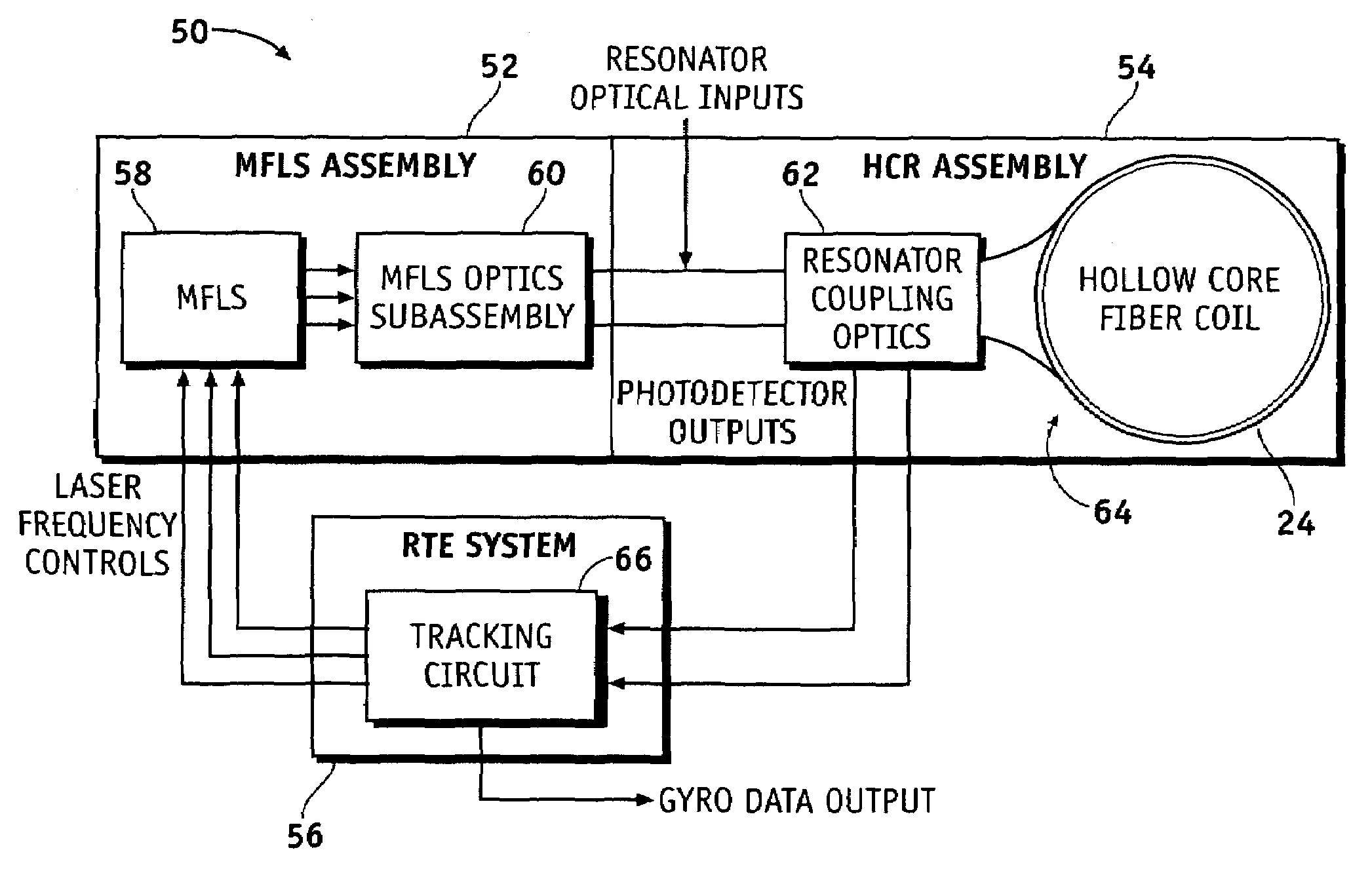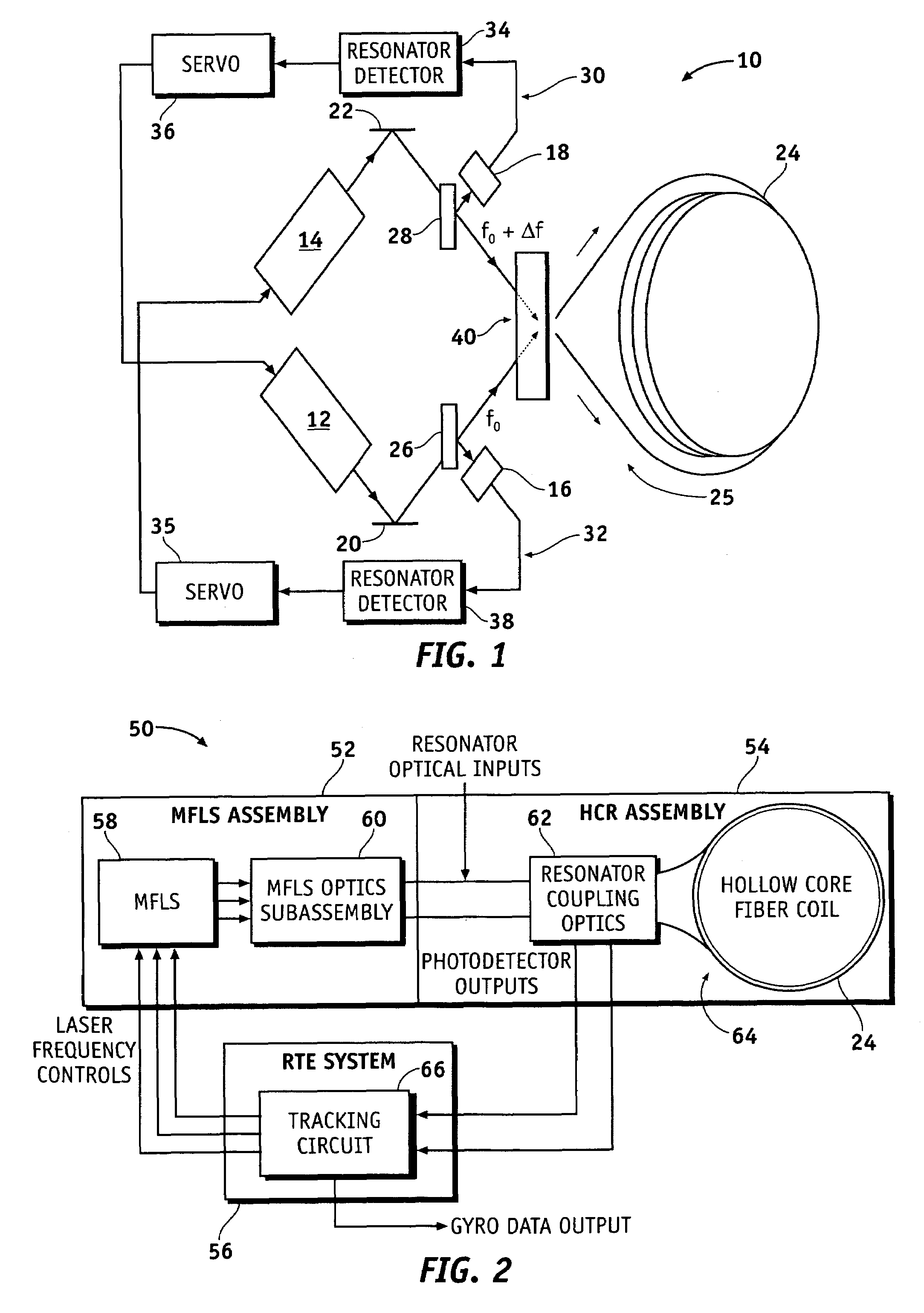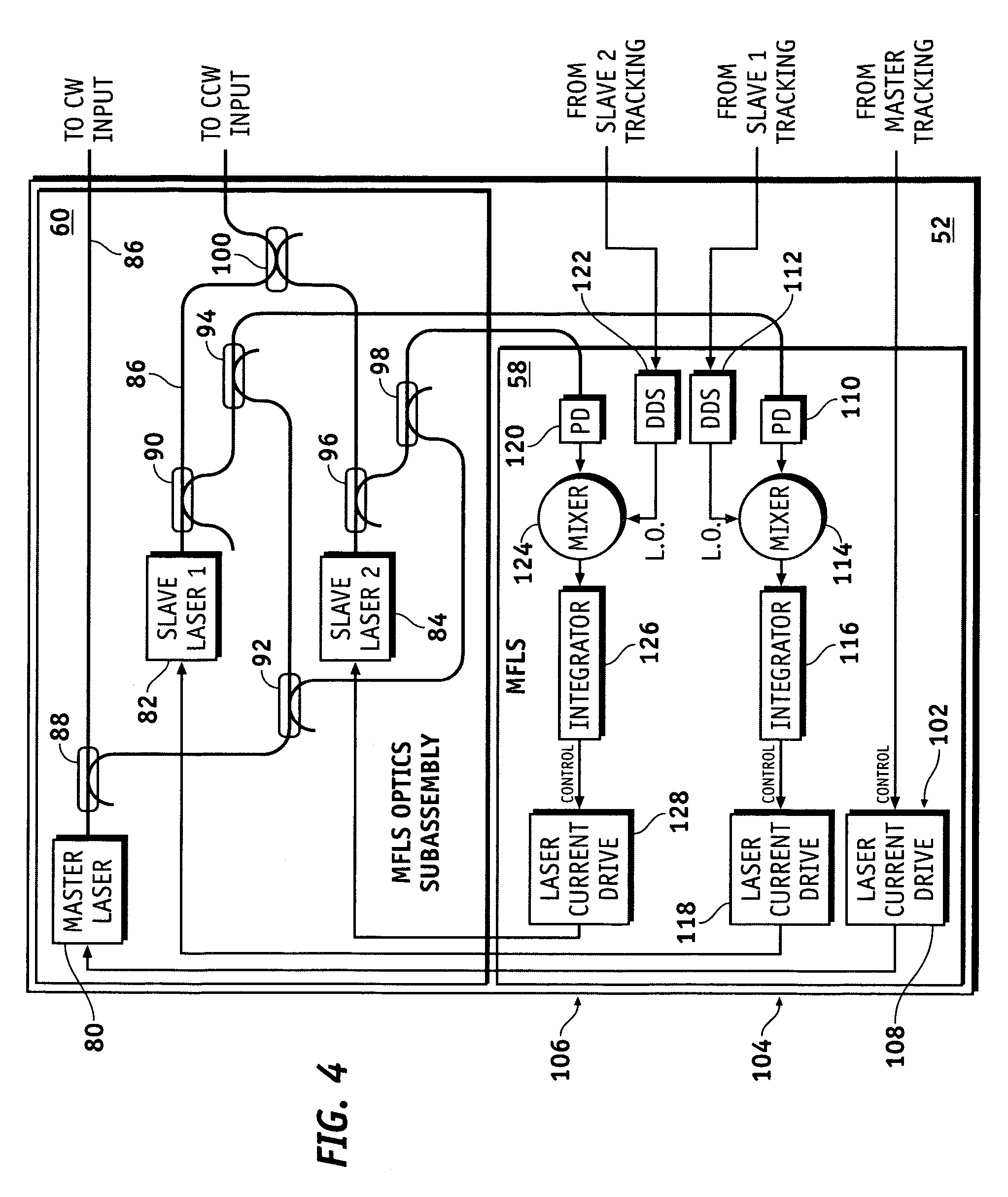System and method for stabilizing light sources in resonator gyro
a technology of gyro and light source, applied in the field of gyro systems, can solve the problems of limiting the gyro performance from desirable levels, reducing the accuracy of the rotation rate measured by the gyro, and difficulty in economically implementing frequency shifters and phase modulators
- Summary
- Abstract
- Description
- Claims
- Application Information
AI Technical Summary
Benefits of technology
Problems solved by technology
Method used
Image
Examples
Embodiment Construction
[0019]The following detailed description of the invention is merely exemplary in nature and is not intended to limit the invention or the application and uses of the invention. Furthermore, there is no intention to be bound by any theory presented in the preceding background of the invention or the following detailed description of the invention.
[0020]Referring now to the drawings, FIG. 1 is a block diagram of a resonator gyro 10 in accordance with an exemplary embodiment of the present invention. The resonator gyro 10 comprises tunable light sources 12, 14 (e.g., tunable lasers) that synthesize light beams, respectively, a resonator 25 circulating light beams in counter-propagating directions and having a recirculator 40 that introduces a portion of the light beams from the tunable light sources 12, 14 into the resonator 25, photodetectors 16, 18 that sample light circulating in the resonator 25, resonance detectors 34, 38 coupled to the photodetectors 18, 16, respectively, that de...
PUM
 Login to View More
Login to View More Abstract
Description
Claims
Application Information
 Login to View More
Login to View More - R&D
- Intellectual Property
- Life Sciences
- Materials
- Tech Scout
- Unparalleled Data Quality
- Higher Quality Content
- 60% Fewer Hallucinations
Browse by: Latest US Patents, China's latest patents, Technical Efficacy Thesaurus, Application Domain, Technology Topic, Popular Technical Reports.
© 2025 PatSnap. All rights reserved.Legal|Privacy policy|Modern Slavery Act Transparency Statement|Sitemap|About US| Contact US: help@patsnap.com



